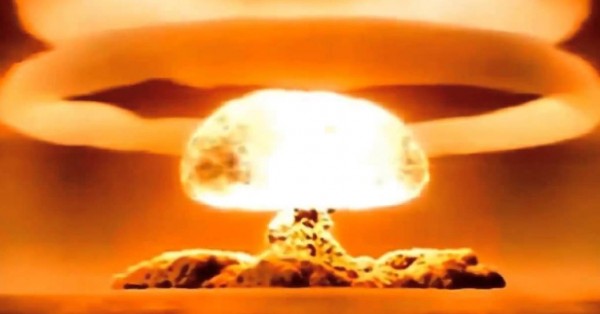Russia Building Anti-Stealth Radar System, its Fourth, in the Arctic
| Arthur Dominic Villasanta | | Oct 29, 2016 08:05 AM EDT |
(Photo : Russian Federation) The Tsar Bomba nuclear weapon -- the most powerful nuclear explosion in history -- explodes in the air over Novaya Zemlya in 1961.
Russia within the year will activate its fourth "Podsulnukh-E" long-range, over-the-horizon radar system it claims can quickly detect United States stealth aircraft such as the B-2 Spirit flying over the ocean 500 kilometers away.
The new Podsulnukh (a Russian word meaning "sunflower) is located at the Russian-held archipelago called Novaya Zemlya ("new island") in the Arctic Circle, according to sources in the Ministry of Defense of the Russian Federation.
Like Us on Facebook
Novaya Zemlya is notorious as the most "atomic bombed" island in the world. The former Soviet Union conducted 224 nuclear tests on the island until 1990.
Included in this massive number is the largest and most powerful nuclear device ever exploded by man, the "Tsar Bomba." This nuclear device with a yield of 50 megatons was detonated as an air burst on October 30, 1961.
The ministry source said Russia plans to construct a total of six Podsulnukh stations along the coast of Novaya Zemlya. Deputy Defense Minister Dmitry Buklgakov, who visited the construction site of the first radar station, said a runway capable of handling all types of combat aircraft is also being built nearby.
A distinctive feature of the Podsulnukh is its mammoth antenna array up to five kilometers long and five meters tall that can identify aerial targets 500 kilometers away and sea targets up to 400 kilometers away.
Podsolnukh E is a coast-horizon shortwave short-range radar system that can detect both air and sea targets approaching it from the sea. It can simultaneously detect, track and classify 100 aerial targets and 300 maritime targets in an automatic mode.
The system is also able to determine the target's position and give target coordinates to weapon systems such as jet fighters; ships or surface-to-air missile batteries.
Russian sources said short-wave stations such as Podsolnukh can see stealth fighter jets like the multi-million dollar F-35 "as clearly as WWII-era aircraft".
It says the system can become operational in 10 days and needs a team of just three people to remain operational. The radar stations have to be spaced 370 kilometers apart to provide complete coverage.
Sea- and shore-based OTH systems are popular in Russia, which has long coastlines in Europe and Asia.
Russia currently has three operational Podsulnukh radar stations: one each in the Sea of Okhotsk; the Sea of Japan and the Caspian Sea. These fixed stations, however, are easily detected because of their large radar towers.
TagsPodsulnukh-E, over-the-horizon radar, Novaya Zemlya, Arctic Circle, B-2 Spirit
©2015 Chinatopix All rights reserved. Do not reproduce without permission
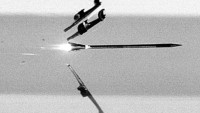 Russia Claims T-14 Armata Anti-Missile Defense can also Destroy Armor Piercing Anti-Tank Rounds
Russia Claims T-14 Armata Anti-Missile Defense can also Destroy Armor Piercing Anti-Tank Rounds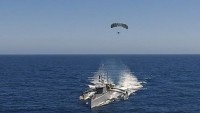 DARPA Robot Submarine Killer Warship called ACTUV gets a ‘Spy in the Sky’
DARPA Robot Submarine Killer Warship called ACTUV gets a ‘Spy in the Sky’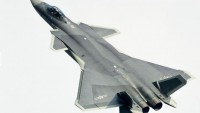 China’s J-20 Stealth Jet isn’t an Air Superiority Fighter; will Attack US Warships Instead
China’s J-20 Stealth Jet isn’t an Air Superiority Fighter; will Attack US Warships Instead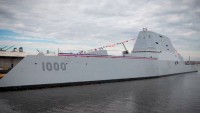 USS Zumwalt Officially Joins the US Navy; will Operate in Asia
USS Zumwalt Officially Joins the US Navy; will Operate in Asia
EDITOR'S PICKS
-

Did the Trump administration just announce plans for a trade war with ‘hostile’ China and Russia?
-

US Senate passes Taiwan travel bill slammed by China
-

As Yan Sihong’s family grieves, here are other Chinese students who went missing abroad. Some have never been found
-

Beijing blasts Western critics who ‘smear China’ with the term sharp power
-

China Envoy Seeks to Defuse Tensions With U.S. as a Trade War Brews
-

Singapore's Deputy PM Provides Bitcoin Vote of Confidence Amid China's Blanket Bans
-

China warns investors over risks in overseas virtual currency trading
-

Chinese government most trustworthy: survey
-

Kashima Antlers On Course For Back-To-Back Titles
MOST POPULAR
LATEST NEWS
Zhou Yongkang: China's Former Security Chief Sentenced to Life in Prison

China's former Chief of the Ministry of Public Security, Zhou Yongkang, has been given a life sentence after he was found guilty of abusing his office, bribery and deliberately ... Full Article
TRENDING STORY

China Pork Prices Expected to Stabilize As The Supplies Recover

Elephone P9000 Smartphone is now on Sale on Amazon India

There's a Big Chance Cliffhangers Won't Still Be Resolved When Grey's Anatomy Season 13 Returns

Supreme Court Ruled on Samsung vs Apple Dispute for Patent Infringement

Microsoft Surface Pro 5 Rumors and Release Date: What is the Latest?
